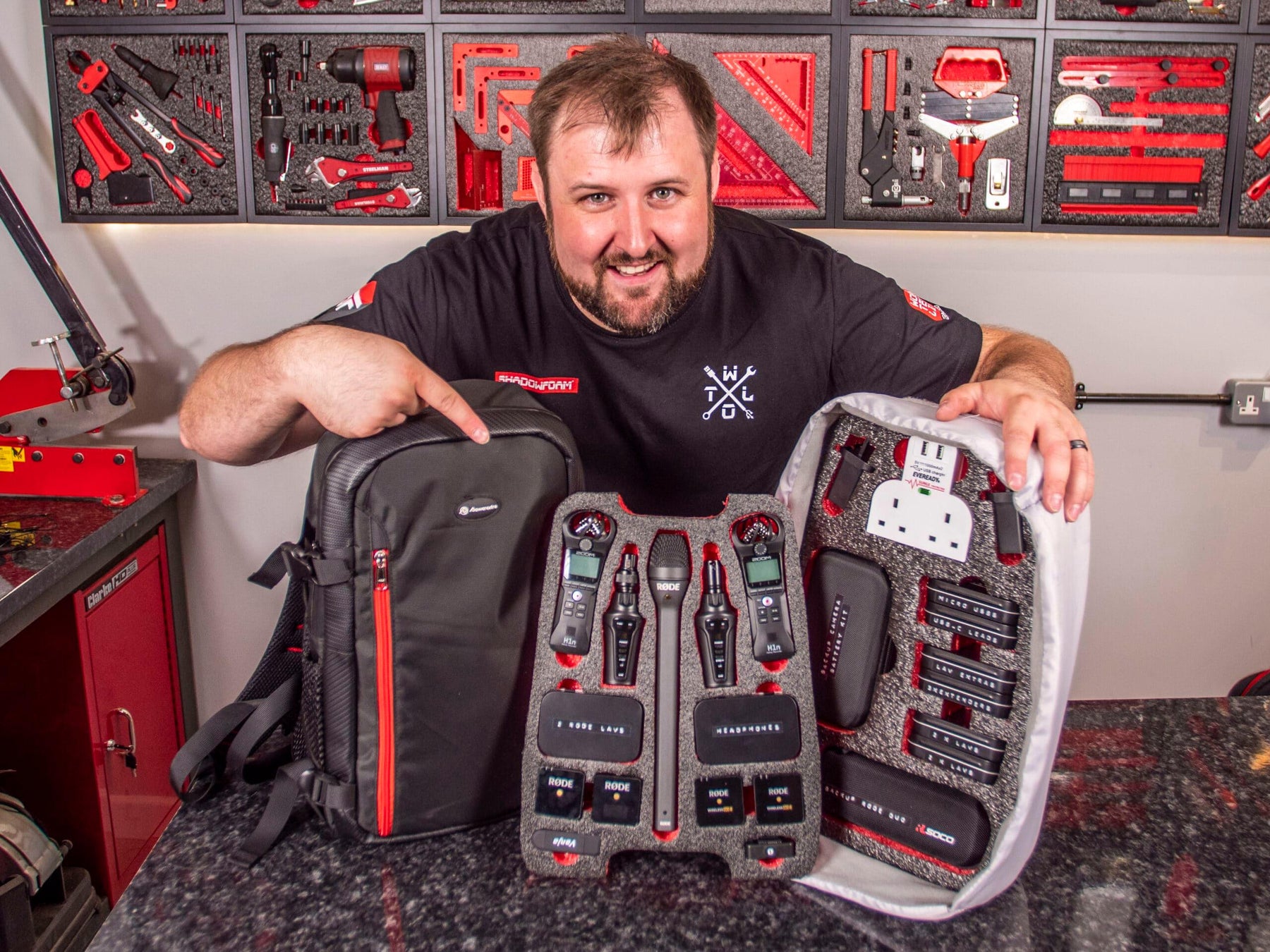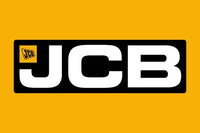Dagelijkse besteldatum om 14.00 uur

Het perfecte, draagbare camera-, batterij- en audiopakket? (Deel 3 - audiokit)
Als je veel video's maakt, zoals wij, is het belangrijk om ervoor te zorgen dat je alles bij de hand hebt. Omdat we actief zijn in het bedrijf waarin we actief zijn, willen we ook dat het georganiseerd, beschermd en gemakkelijk te vinden is. Belangrijk ook: klaar voor gebruik, wanneer u maar wilt. Zoals je misschien hebt gezien in ons bericht over het aanbrengen van enige verbetering in onze installatie, hebben we onze cameratas al met verbluffende resultaten aangepakt. Nu is het tijd om hetzelfde te doen met onze audiokit . Met name onze Rode microfoon is opgezet en maakt het opladen ervan onderweg mogelijk.
Waar bewaren we de audiokit in?
Wij hebben voor een rugzak gekozen omdat we hem daardoor ergonomisch op onze schouders kunnen dragen. Het houdt vooral onze handen vrij voor het filmen of vervoeren van onze Nuprol camera-uitrustingskoffer. We hadden onlangs ook wat gereedschap in een Dewalt-rugzak gestopt en hadden daar veel succes mee. Daardoor hebben we geleerd dat zelfs met zware uitrusting het gewicht gelijkmatiger wordt verdeeld, waardoor het gemakkelijker en veiliger te dragen is. rode microfoon audiokit video maken
Het is frustrerend dat de PowerExtra- rugzak die we hebben gekregen niet langer verkrijgbaar is. We vonden het de perfecte maat en formatie voor wat we nodig hebben. Hij is multifunctioneel, maar speciaal ontworpen als reistas voor een DSLR-camera. Het heeft ook een grote holte, zodat er veel spullen in kunnen worden opgeborgen. Bovendien geeft het ons, omdat het achterpaneel helemaal opengaat, de toegang die we nodig hebben om het schuim erin te krijgen. Als totale bonus kan de binnenvoering van de behuizing zelfs naar buiten worden getrokken. Dit geeft ons een perfect sjabloon om te gebruiken om ons schuim op maat te snijden! Altijd op zoek naar de meest efficiënte manier van werken!

Wat gaat daar naar binnen
Vanuit een diepteperspectief kunnen we met deze tas een laag van 70 mm en een laag van 50 mm schuim aanbrengen. Hiervoor is dat geweldig. We hebben onze uitrusting de afgelopen 6-7 jaar verfijnd, zodat we alleen de essentiële zaken hebben die we in elke situatie nodig kunnen hebben. Maar natuurlijk hebben we ook redundantie en back-ups nodig, voor het geval we onderweg technische problemen ondervinden. Dus ook al is dit in de loop van de tijd verfijnd en gestript, het is nog steeds een hoop uitrusting! rode microfoon audiokit video maken
- 2x Zoom H1N 's
- 6 x Rode Lav 's (ook bekend als Lavalier-reversmicrofoon) – opgeslagen als 3 sets van 2 – 1 hoofd- en 2 back-up
- 1 x Rode handmicrofoon
- 1x Kimafun zender/ontvanger
- 2 x Rode microfoonduoset (2 zenders / 1 ontvanger) – 1 hoofd- en 1 back-up
- 1 x Rode draadloos solo
- 1 x Camera-back-upkit (naast alles in onze hoofdcamera-opslag)
omvat: 5 batterijen
Reserve-oplader
Leiding - 1 x dubbele netadapter (met 2 x USB-oplaadpunten)
- 2 x USB-adapters (zal elk van de twee bovenstaande stopcontacten omzetten in 4 USB-oplaadpunten, wat ons 10 in totaal oplevert)
- 1 x blikje Micro USB's
- 1 x blikje USB-C-kabels
- 1 x blikje wastafel extra's (converters)
- 1 x blikje wastafelverlengers
- 1 x USB/SD-adapter
Extra dingen om te helpen bij het organiseren en opbergen:
Voor de blikken hebben we deze in bulk gekocht bij Amazon. Ze zijn erg handig voor het opbergen van allerlei kleinere stukjes die anders verloren zouden kunnen gaan. Je kunt net zo goed een Altoids-blikje of iets dergelijks gebruiken als je er een hebt liggen. Dat is wat we deden toen we onze compacte gereedschapskoffer maakten.
We hadden ook een aantal iets grotere, zachte koffers met ritssluiting die handig waren voor het opbergen van iets grotere spullen. Soms lenen voorwerpen zich er misschien niet voor om in het schuim te worden gesneden, dus daar komen deze van pas.
Al het bovenstaande is duidelijk gelabeld met ons voordelige Dymo embossing labelle r. Nu kunnen we heel snel vinden wat we nodig hebben. rode microfoon audiokit video maken

Hoe het gedaan is
We hebben ons schuim zojuist in rechthoekige vormen van vergelijkbare grootte gesneden. U kunt dit doen door schuim op maat te laten maken , of door een vel uit een voordeelpakket of een medium vel te knippen. Je hebt ook snijapparatuur nodig. We gebruiken onze volledige snijset die we altijd aanbevelen. Hierin zitten ook veiligheidshandschoenen en onze reparatielijm voor het geval u fouten maakt. rode microfoon audiokit video maken
Door de verwijderbare binnenvoering van de koffer te gebruiken, konden we gemakkelijk de snede langs de rand ervan traceren. Dit gaf ons twee identieke platen op zowel de 70 mm als de 50 mm liner. De 70 mm komt in de basis en hoeft daarom niet veel of helemaal niet te worden verwijderd. Maar omdat de bovenste laag van 50 mm moet worden verwijderd om gemakkelijker toegang te krijgen tot de dikkere laag eronder, hebben we enkele wijzigingen aangebracht. We hebben hem een klein beetje kleiner gemaakt, zodat hij er gemakkelijker in en uit gaat. Maar ook handgrepen aan de boven- en onderkant toegevoegd voor supergemak.
Vervolgens hebben we de tijd genomen om onze indeling te plannen. Zoals we altijd zeggen als je aan het schaduwschuimen bent, is dit een heel belangrijk onderdeel van het proces, dus je moet niet overhaast zijn. Voor ons wilden we dat de dingen die we het vaakst gebruiken bovenaan staan, en vervolgens de back-upitems in de basis.
Toen we eenmaal tevreden waren met de lay-out, was het gewoon tijd om te knippen en te pellen om de items in het schuim te passen. Het is altijd de moeite waard om onze ' how to' -gidsen te raadplegen voordat u begint. Zeker als het de eerste keer is dat je met Shadow Foam werkt.
Afwerking.
We hebben ook zowel onze liniaal als onze stencilset gebruikt. Dit betekende dat we voor sommige items hele mooie vingertrekkers konden krijgen, zodat ze er gemakkelijker uit konden worden gehaald. Dit is vooral in dit geval belangrijk. Anders kan het schuim, wanneer alles in een “samendrukbare” zak is verpakt, een beetje rond de inhoud worden samengedrukt. Met de vingerbewegingen is het nog steeds mogelijk om een stevige vingergreep te krijgen om deze te verwijderen.
We waren erg blij met hoe het eruit zag, want alles was vlak gemonteerd en er stak niets uit, wat betekende dat het netjes kon worden opgeborgen. En we hebben een paar kleine hacks of aanpassingen gemaakt om dit echt naar een ander niveau te tillen:
Hack # 1
Met de voedingsadapter wilden we dat deze vlak in het schuim zat. Dus hebben we het bovenprofiel in het schuim gesneden, maar daarna een extra diepe uitsparing gezaagd waar de pinnen zaten, zodat ze netjes konden worden ondergebracht zonder de mof uit het schuim te duwen.
Hack # 2
Om de beschikbare ruimte optimaal te benutten, hebben we een aantal items in de afzonderlijke schuimlagen op elkaar gestapeld. Wanneer de handmicrofoon bijvoorbeeld wordt verwijderd, blijkt dat de XLR-verlengkabel eronder netjes is opgeborgen voor wanneer dat nodig is. En we deden hetzelfde met de Kimafun zender/ontvanger, zodat de ariels eronder werden ondergebracht.
Alles op een rij zetten
Toen de inzetstukken eenmaal in de tas waren geplaatst, dienden ze feitelijk om de tas wat meer stevigheid en vorm te geven. Maar het ritsde nog steeds gemakkelijk dicht. rode microfoon audiokit video maken
We hebben onze interviewkaarten aan het platte voorvak van de tas toegevoegd. En in het grote, gevoerde voorvak kan onze laptop veilig leven, zodat we de beelden ter plaatse gemakkelijk kunnen overbrengen en bekijken. De voedingsadapter voor de laptop kan vervolgens veilig worden opgeborgen in het voorvak van de tas. rode microfoon audiokit video maken

Dus in combinatie met onze Nuprol cameratas denken we dat we nu de perfect georganiseerde mobiele filmoplossing hebben. Maar kijk eens , en kijk wat je ervan vindt. We horen graag welke andere ideeën mensen hebben om dit in de toekomst te verbeteren, dus neem gerust contact met ons op met uw mening.








































































